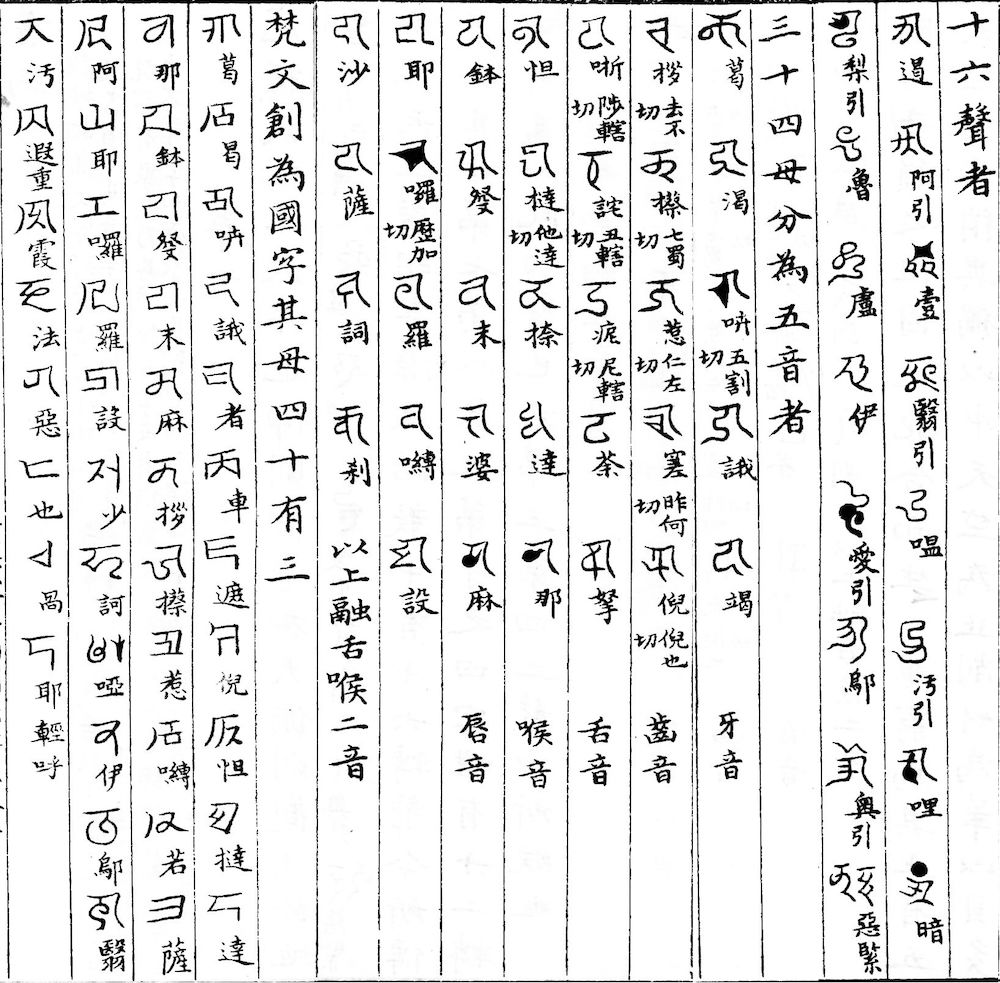Fashukao 法書考 "Studies on calligraphy" was written during the Yuan period 元 (1279-1368) by Sheng Ximing 盛熙明 (early 14th cent.), about whose life practically nothing is known. He was of Uyghur (Weiwu'er 畏兀兒) descent and participated in the compilation of the statecraft encyclopaedia Jingshi dadian 經世大典.
The book of 8 juan length assembles statements of earlier writers on all aspects of calligraphy, but Sheng also added statements derived from his observations.
The first chapter (Shupu 書譜) is a summary of calligraphy theory, enriched by the analysis of individual inscriptions and artworks. The second part (Ziyuan 字源) consists of a list of the Brahmi or 'Phags-pa alphabet (fanyin 梵音), and an analysis of the nature of Chinese characters, as based on the preface of the Han–period 漢 (206 BCE-220 CE) dictionary Shuowen jiezi 說文解字 and Zhang Huaiguan's 張懷瓘 book Shuduan 書斷. Methods to handle and control the brush (Bifa 筆法) are the topic of the third fascicle. The chapter Tujue 圖訣 "Image and formulas" focuses on individual brushstrokes and character parts. The next part (Xingshi 形勢) discusses the structure and shape of characters in calligraphy and the thickness of individual brush strokes. The part "Style and spirit" (Fengshen 風神) explains the influence of the artist's mood and character, the velocity of producing characters and character parts, and the overall "edgy and round" appearance and composition of a calligraphy. The main part of the book concludes with the chapter Gongyong 工用 "Application of skills", mentioning various schools and lineages of calligraphers, the art of "copying by eyesight" (linmo 臨摹) and the application of coloured ink. The last fascicle is only an appendix dealing with calligraphy in seal script and with notes and marks on calligraphic works (yashu 押署, bawei 跋尾).
The book was finished in 1344 and was presented to the throne. It is included in the series Shiwanjuanlou congshu 十萬卷樓叢書, Sibu congkan xubian 四部叢刊續編, Lianting cangshu shi'er zhong 楝亭藏書十二種 and Siku quanshu 四庫全書.
 |
Sibu congkan xubian 四部叢刊續編 edition. |